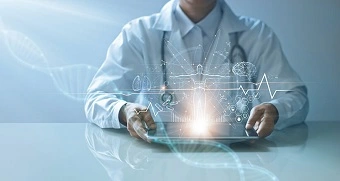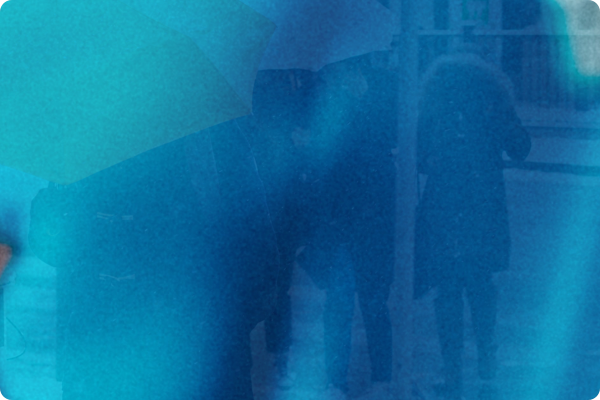The Digital Pulse: How IoT is Shaping Modern Healthcare
24 Oct 2024 • by Natalie Aster

In today’s rapidly advancing technological era, the Internet of Things (IoT) is making waves across diverse fields, and healthcare is no exception. The soaring penetration of smart sensors, sophisticated devices, and real-time data analytics is redefining the way healthcare services are delivered, improving patient outcomes and boosting operational efficiency.
The increasing presence of IoT in the healthcare field, often called the Internet of Medical Things (IoMT), encompasses a vast network of smart devices and sensors designed to gather, transmit, and scrutinize health records, ranging from wearable gadgets that keep watch on vital signs to sophisticated medical equipment used in hospitals and clinics.
Improving Patient Care with Real-Time Health Tracking
Among the most transformative effects of IoT on healthcare is the ability to provide instant patient monitoring. Wearables including fitness trackers, smartwatches, and specialized medical sensors, are able to maintain continuous surveillance of a patient’s vital signs (blood pressure, heart rate, glucose levels, etc,). The collected data is transmitted directly to healthcare providers, enabling early detection of any abnormalities and allowing for timely interventions before conditions worsen.
For patients with chronic illnesses such as heart disease, diabetes, or respiratory issues, IoT devices are crucial for managing their health. Remote monitoring ensures that treatment adjustments can be made promptly without frequent hospital visits, improving patient convenience while decreasing the burden on healthcare systems.
Enhancing Management of Chronic Conditions
A huge portion of healthcare costs and resource allocation is contributed by chronic diseases. By enabling continuous data monitoring and personalized care at home, IoT devices facilitate the efficient management of these conditions, diminishing the need for in-person consultations and hospitalizations.
For instance, such devices as continuous glucose monitors (CGMs) and smart insulin pens give diabetics the ability to control their blood sugar levels in real time. These devices notify users when their levels deviate from the normal range, prompting immediate corrective actions. Moreover, healthcare providers can remotely access this data to make adjustments to medications or lifestyle recommendations to better suit the patient’s needs.
Optimizing Hospital Workflow
IoT is also transforming hospital operations. By harnessing IoT solutions, hospitals can boost operational efficiency, save on costs, and enhance patient experiences. As a case in point, smart beds can instantly monitor patient movements to prevent falls and ensure optimal positioning. Similarly, automated medication dispensers and RFID-based tracking systems for medical equipment help simplify inventory management and pare down human errors.
Additionally, IoT solutions support efficient scheduling of surgeries, admissions, and discharges, ensuring better resource allocation and shorter waiting times. For instance, in emergency rooms, IoT devices can triage patients based on their condition, ensuring that those in critical need of care receive attention first.
Telemedicine & IoT: A New Era of Remote Healthcare
The rise of telemedicine, bolstered by the COVID-19 pandemic, has further emphasized the importance of IoT in the healthcare domain. By integrating IoT devices with telemedicine systems, healthcare providers can conduct remote consultations with real-time access to patient data. Physicians can monitor vital signs, review medical histories, and even adjust treatment plans from afar.
It proves particularly valuable for patients in rural areas or those with mobility difficulties. They no longer need to cover long distances to receive healthcare services. IoT enables virtual doctor-patient consultations, ensuring consistent care whilst minimizing infection risks, especially in outbreak scenarios.
Empowering Healthcare with Predictive Analytics
IoT devices gather huge amounts of data, which, when analyzed properly, grant invaluable insights into patient health trends. With the help of AI and ML algorithms, healthcare systems can identify patterns in the data records, enabling predictive analytics that can foresee possible health problems before they arise. Thus, IoT allows for preventative care, diminishing hospitalization and severe health events.
Hospitals can also leverage predictive analytics to optimize staffing, forecast patient admission rates, and manage resources efficiently. By understanding patterns in IoT data, administrators can better prepare for patient surges, minimizing bottlenecks and enhancing patient care.
Final Thoughts
The footprint of IoT in modern healthcare is profound and far-reaching. From enhancing patient monitoring and chronic disease management to optimizing hospital operations and enabling remote care, IoT is transforming every facet of the healthcare industry. As we continue to harness the potential of IoT, we can expect to see even greater improvements in patient care, cost efficiency, and overall healthcare quality.
The future of IoT in healthcare is bright, with continuous advancements in sensor technology, AI, and cloud computing paving the way for more sophisticated healthcare solutions. As 5G networks become more widespread, the speed and reliability of IoT data transmission will improve, further enhancing real-time monitoring and remote healthcare capabilities.
Moreover, personalized medicine will benefit greatly from IoT. By collecting granular data on patients' daily activities, sleep patterns, and overall health, healthcare providers can offer highly tailored treatment plans. This will not only improve patient outcomes but also reduce unnecessary treatments and hospitalizations.
Product Details:
IoT in Healthcare Market Size, Share, Forecast, & Trends Analysis by Offering (Monitoring Devices (Glucose, Cardiac, Respiratory, Blood Pressure, Neuro) Pacemaker, ICD, Insulin Pump) Application (Telehealth, In-Patient) End User - Global Forecast to 2031
Published: October 2024
Pages: 291
Market Publishers boasts a rich collection of insightful research studies covering healthcare market, find it in the Healthcare Market Research Reports Catalogue.
CONTACTS
The Market Publishers, Ltd.
Natalie Aster
Tel: +44 208 144 6009
Fax: +44 207 900 3970
[email protected]
MarketPublishers.com
Analytics & News
